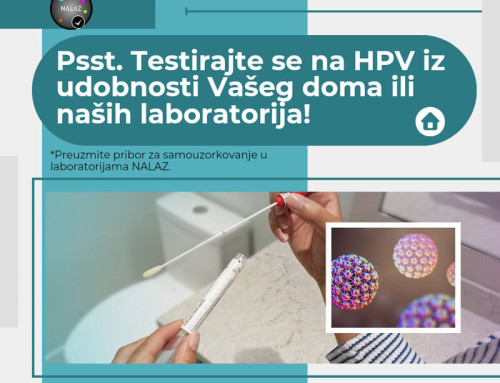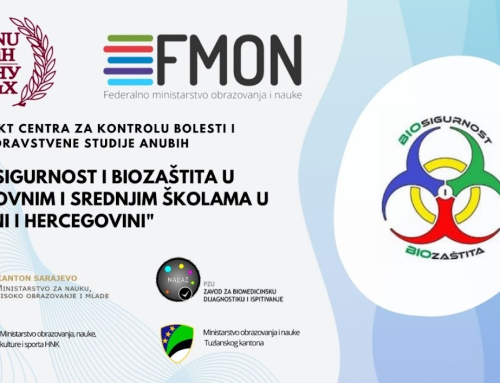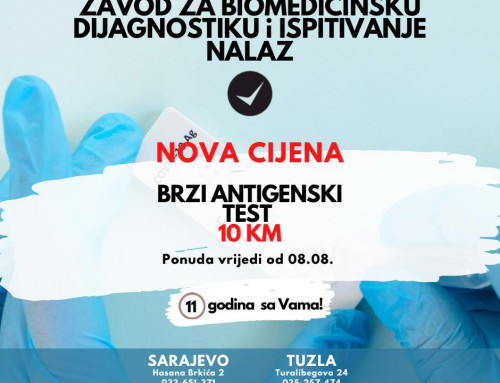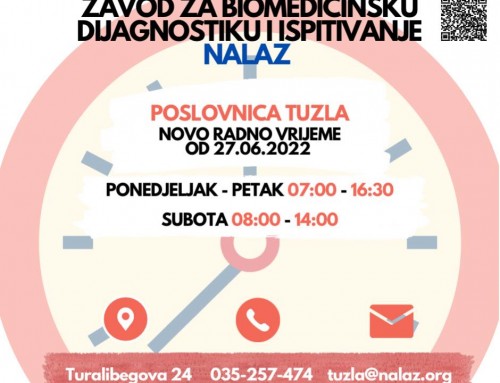
- 5x veći rizik ( iza operacije Ca. dojke, majka ili sestra Ca.dojke prije menopauze, rizični gen BRC1 i BRC2)
- 4x veći rizik ( majka i sestre Ca.dojke, prvorotkinja u 30-35 god, Ca. jajnika, uterusa, zračenja u dječijoj dobi).
- 2x veći rizik (nerotkinje, gojaznost, menarha prije 12.god, menopauza iza 50.god, stres, pušenje, alkoholizam , nepravilna prehrana).
SKRINING KARCINOMA DOJKE S obzirom na to da na terapijski uspjeh, tj. preživljavanje najviše utiče što ranija dijagnoza bolesti, glavni cilj je odgovarajući skrining. Brojne studije su dokazale da je skrining raka dojke evidentno koristan za žene između 50. i 74. godine starosti. Važno je pravilo da se svako sumnjivo područje u dojci mora smatrati mogućim zloćudnim tumorom, dok se ne dokaže drugačije. Metode za rano otkrivanje raka dojke su: samopregled dojki, klinički pregled dojki, UZV pregled dojki, mamografija, magnetna rezonanca. Koje medicinske procedure obuhvata kompletan pregled dojki?
- Klinički pregled dojki
- Ultrazvuk dojki- rutinski nakon 35. god.
- Mamografija- rutinski nakon 40. god.
- Tumor markeri (CEA,Ca 15-3)
- Laboratorijske analize
- Edukacije i savjetovalište gdje se pacijent informiše o bolesti, faktorima rizika, prevenciji, dijadnostici i mogućnostima liječenja.
Algoritam pregleda Od 20. godine se preporučuje samopregled a od 35. godine klinički pregled dojke jednom godišnje. Prvu mamografiju treba obaviti u 40. godini ili ranije kod rizičnih grupa. Mamografiju treba ponavljati svake 2 godine, tj. svake godine od 50. godine života, a rizične grupe od 35. godine. Redovne mamografije smanjuju mortalitet od raka dojke kod žena od 50. do 69. godine za 30%. SAMOPREGLED DOJKI Promatranjem i opipavanjem moguće je otkriti promjenu na dojkama. Samopregled dojki treba postati navika a obavlja se od 5-10 dana ciklusa. Znakovi upozorenja su: otkrivanje kvržice pri opipu, zadebljanje u dojci, ubrzano i nesimetrično povećanje jedne dojke, promjene na koži, uvlačenje bradavice, iscjedak iz bradavice. UKOLIKO SE OTKRIJE NA VRIJEME, RAK DOJKE JE IZLJEČIVA BOLEST! Rano otkrivanje bolesti je imperativ!
Prim.doc.dr.Lejla Mešalić
Breast cancer is the most frequent malign tumour at women. Eight of 10 breast tumefactions are benign tumours. 95 of 100 women with early breast cancer survive 5 years. Mortality from breast cancer in the European Union is about 58000 women a year. It is estimated that 135000 new patients are diagnosed per year in almost all European Union countries with national programme for early detection of breast cancer, and the sample includes all women aged 50 to 69.
ETIOLOGY AND RISK FACTORS
So far, the etiology factors responsible for occurrence of breast cancer have not been identified, but epidemiological records significantly indicate possible groups of genetic, endocrine, reproductive and external factors. The basic method of selection is mammography, which may detect the changes on breast to two years before the tumour is palpable.
Reliable genetic risk factors are: hereditary mutation of tumour suppressor genes BRCA1 and BRCA2, next kins with breast cancer, particularly before the age 40, women who already had breast cancer, if the breasts were exposed to radiotherapy before age 30, particularly due to Hodgkin lymphoma, breasts composed of numerous slices and ductuses and less fat tissue, diagnosed atypical hyperplasia or lobular cancer in situ.
Genetic testing is important step in combating the breast cancer. Testing may show if certain person has changes in genes related to possible occurrence of breast or ovarian cancer. The test analyses BRCA1 and BRCA2 genes, determined to be frequently mutated at hereditary forms of breast and ovarian cancer. Test is made to monitor people with family inclination to breast and ovarian tumour.
Reproductive factors: age at menarche and menopause (menarche before 12 years of age and menopause after 50 years of age), total duration of reproduction period, age at first pregnancy and number of complete pregnancies, women who delivered at older age (after 30 years of age), barren women, or women who were taking the substitute hormone therapy or oral contraceptives for a long period of time.
Endocrine factors: endogene hyperestrogenism
External factors are related to viral infections, increased consumption of alcohol, exposure to ionic radiation, smoking, long-term hair colouring and stress. Psychiatric patients have 3,5 times higher incidence of breast cancer than other patients. One of external predisposing factors in occurrence of the disease is stress, but since stress is hardly measurable unit, only few data about it are available in literature.
WOMAN SHOULD BE AWARE OF HER BREASTS
- 5x higher risk (after breast cancer surgery, mother or sister of breast cancer patient before menopause, risky gene BRC1 and BRC2)
- 4x higher risk (mother and sister of breast cancer patient, primipara aged 30-35, ovarian cancer, radiation in childhood).
- 2x higher risk (barren women, obesity, menarche before 12 years, menopause after 50, stress, smoking, alcoholism, irregular nutrition).
SCREENING OF BREAST CANCER
Considering that therapeutic success, in fact survival mainly depends on as early diagnose as possible, the main aim is to have the appropriate screening. Numerous studies proved that screening of breast cancer is evidently useful for women aged between 50. and 74. Important rule is that any suspicious area in breast must be considered as possible malign tumour until proven differently. Methods for early detection of breast cancer are: self-screening of breasts, clinical screening of breasts, ultra sound screening of breasts, mammography, magnetic resonance.
Which medical procedures include the comprehensive breasts screening?
- Clinical breast screening
- Breast ultrasound – routine after 35 years of age
- Mammography- routine after 40 years of age
- Tumour markers (CEA,Ca 15-3)
- Laboratory tests
- Education and advising to inform the patient about disease, risk factors, prevention, diagnostic and treatment possibilities.
Screening algorithm
Self-screening is recommended from the age of 20, while clinical screening once a year is recommended from the age 35. The first mammography should be done at the age 40 or earlier at risky groups. Mammography should be repeated every 2 years, in fact every year from age 50, while at risky groups from the age 35. Regular mammography reduces the mortality from breast cancer at women aged 50. to 69. for 30%.
SELF-SCREENING OF BREASTS
Observation and palpation may detect the change on breasts. Self-screening of breasts should become a habit, and it is done in 5-10 days cycle. Warning signs are the following: detection of knots during palpation, thickening in breast, faster and asymmetric increase of one breast, changes on skin, pulled in nipples, nipple discharge.
IF DETECTED ON TIME, BREAST CANCER IS A CURABLE DISEASE!
Early detection of disease is imperative!
Prim.doc.dr.Lejla Mešalić




